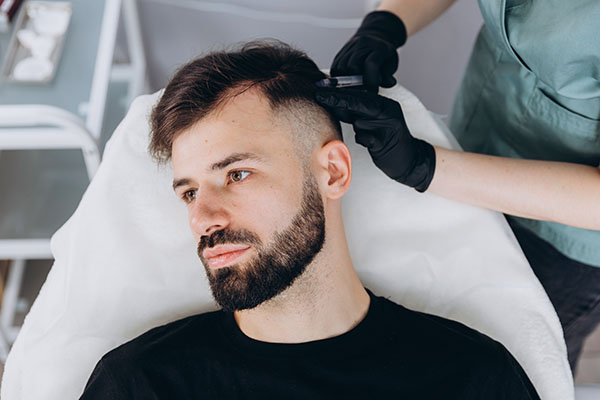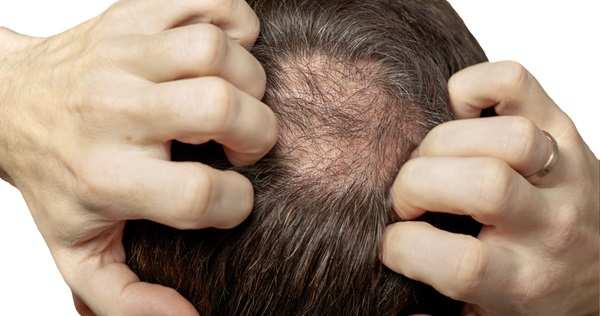Choosing the Right Hair Restoration Plan

Hair loss can be a devastating experience. It affects self-esteem and how others view someone, leading to social isolation and depression. The good news is there are many different hair restoration methods, and none of them have to be permanent solutions if they do not work out for your unique case. This article will discuss common causes of hair loss in both men and women, along with their respective treatments, so you can decide what works best for your situation.
Understanding the different hair restoration methods
Hair loss is a common problem in men and women. In fact, the American Hair Loss Association states that more than 95% of hair loss in men results from male pattern baldness. For women, the Mayo Clinic states that the incidence rate is lower- only 55% experience alopecia (hair loss). There are many causes of hair loss, which can appear in different ways in both genders.
Hair falls out daily, but it grows within a few weeks or months and often goes unnoticed by the naked eye. However, when the patient notices more hair than usual coming out of their scalp or if their scalp feels thinner, it could be a sign of a larger issue. Once we diagnose a patient's hair loss type, we can help craft an effective treatment plan for their unique case.
Causes of hair loss
Since no one person is alike, there can be multiple causes of a person's hair loss. The most common causes of hair loss include:
- Stressors such as life transitions, physical or emotional trauma, or the death of a loved one
- Hormonal imbalances, including thyroid problems and polycystic ovary syndrome (PCOS)
- Medical conditions that cause inflammation in the body, such as thyroid disease and lupus
- Poor diet, which can lead to nutrient deficiencies such as B-12
- Certain medications such as birth control pills that contain estrogen; diabetic medications; steroids like prednisone; certain antibiotics and antidepressants (including Prozac); chemotherapy drugs used to treat cancer; and some blood pressure
- Genetic predisposal, which is a family history of hair loss is a major indication that a patient is at risk for the condition
- Scalp and fungal infections such as ringworm and tinea capitis
The cause of a patient's hair loss can determine how it appears. It can come out drastically in clumps or gradually fall out, showing patterns. The latter is referred to as male or female pattern baldness.
Diagnosing hair loss
To determine the cause of a patient's hair loss, we will review their medical history and conduct a physical exam. In addition, the doctor will look for telltale signs of certain conditions that can cause temporary or permanent hair loss.
In addition to reviewing the patient's symptoms and performing a physical examination, we may recommend further testing. For example, we may recommend blood tests to check for hormonal imbalances or iron deficiency anemia (low levels of red blood cells), which can result in excessive shedding. In some cases, we recommend specialized tests such as scalp biopsy or imaging studies using magnetic resonance imaging (MRI) or computed tomography (CT).
Medication
Hair restoration medication typically comes in two forms: oral and topical. Patients can take oral medications daily for a long period of time or short periods every few days. Topical products work by laying down a new layer of hair growth on top of the patient's existing hair or scalp. They can be left indefinitely but will eventually wear off with continued use.
Some oral medications may be available over-the-counter (OTC) at a local pharmacy, while others may require a prescription from a doctor to obtain them legally. Some options include Minoxidil and Finasteride, which have proven effective in stimulating new hair growth when used regularly over an extended period. However, it is worth noting a doctor may prescribe the patient a higher dosage offering more long-term and quality results.
Laser Therapy
Laser therapy is a non-invasive treatment that can stimulate new hair growth in men and women. Put simply, the laser beam used in the process is directed at the scalp, which sends a message to the body telling it to start growing new hairs and repair the damaged ones. The process takes time, so the patient may need several sessions before seeing results.
Since everyone's cause of hair loss is different, laser hair therapy offers varying degrees of success. However, this FDA-approved option is one of the most popular methods used by individuals diagnosed with alopecia.
Surgery
Hair transplant surgery is a permanent solution that can be achieved in two ways. The first involves removing donor hair from the back of the head and then transplanting it to an area with balding or thinning. This procedure can be painful and expensive, but it effectively thickens hair density in the desired areas.
The second type of transplant surgery involves manually inserting individual hairs into the scalp using a needle and syringe method known as follicular unit extraction (FUE). This technique may be less painful than traditional methods, but it does not guarantee that all transplanted hairs will grow successfully over time.
Seek treatment today
We hope this article has helped you better understand hair loss and the different hair restoration methods. For more information on how to revitalize your hair and scalp, visit us at http://dillonhair.com.
or call the Dillon Hair Restoration Schaumburg office at (847) 241-2132 today.
Request an appointment here: http://dillonhair.com or call Dillon Hair Restoration at (847) 241-2132 for an appointment in our Schaumburg office.
Check out what others are saying about our services on Yelp: Hair Restoration in Schaumburg, IL.
Recent Posts
Hair thinning treatments are far more versatile than they get credit for. Our team works closely with each patient to determine the root cause of their thinning tresses and craft an effective treatment plan. Take a closer look at common causes of hair thinning and the various methods we can use to treat it.Many factors…
Hair loss can significantly impact people, affecting their self-confidence and interpersonal relationships. Fortunately, hair grafting, also known as hair transplantation, provides a viable option to restore the natural hairline. If you are still deciding whether to pursue a hair graft, here are three reasons to consider it.Unlike temporary solutions like wigs or hairpieces, a hair…
For those with wrinkled skin, Botox® injections can provide great relief. While it may be a natural sign of aging, the presence of wrinkles can be frustrating to some. Thanks to the scientific research and testing in the 1990s by several dermatologists, Botox® was approved in 2002 by the Food and Drug Administration for cosmetic…
For many people, losing their hair can be a distressing experience. Temporary to permanent hair loss can greatly affect confidence and self-esteem. Fortunately, several hair loss treatment options are available to help combat this issue and promote hair restoration. Here are some of the most common and effective methods to address hair loss.Topical treatments are…


